Born in South Africa 1947, I visited London aged 16 to be profoundly influenced by John Kendrew's 1944 BBC TV series "The Thread of Life". After a BSc in London and a year with Prof. Shneior Lifson and his PhD student Arieh Warshel at the Weizmann Institute in Israel, I joined the Laboratory of Molecular (LMB), Cambridge, in 1968. I went back to Israel as an EMBO postdoc with Lifson. Collaboration then with Warshel resulted in new multi-scale approaches to molecular modeling: Coarse-grained models that merge atoms to allow folding simulation and hybrid models that combine classical and quantum mechanics to suggest enzymes works by electrostatics. In 1974, I returned to LMB for three years, spent two years with Francis Crick at Salk and seven years at Weizmann, before moving to Structural Biology at Stanford from 1987. My diverse interests have included RNA & DNA modeling, protein folding simulation, classification of protein folds & protein geometry, antibody modeling, x-ray refinement, antibody humanization, side- chain geometry, torsional normal mode, molecular dynamics in solution, secondary structure prediction, aromatic hydrogen bonds, structure databases, and mass spectrometry.
While enjoying membership of the Royal Society and the National Academy, I remain an active programmer, a craft skill of which I am particularly proud. Married in 1968 to Rina, an active artist, we have three children and a rapidly increasing number of grandchildren, all of whom help me stay more-or-less normal.
RECOMB 2015 keynote talk: Birth and future of multiscale modeling of macromolecules
The development of multiscale models for complex chemical systems began in 1967 with publications by Warshel and Levitt recently recognized by the 2013 Nobel Committee for Chemistry. The simplifications used then at the dawn of the age of computational structural biology were mandated by computers that were almost a billion times less cost-effective than those we use today. These same multiscale models have become increasingly popular in application that range from simulation of atomic protein motion, to protein folding and explanation of enzyme catalysis. In this talk I describe the origins computational structural biology and then go on to show some of the most exciting current and future applications



